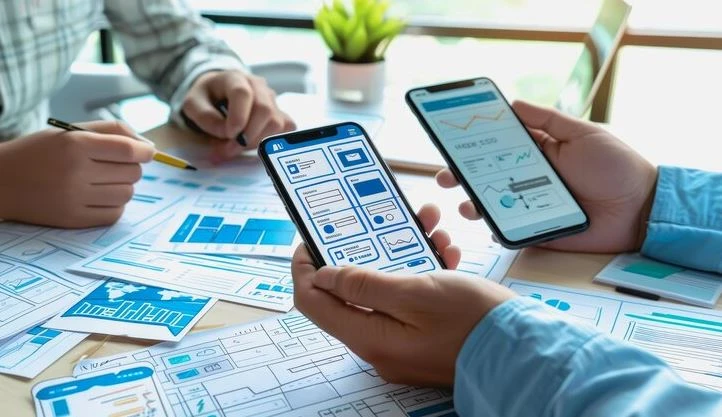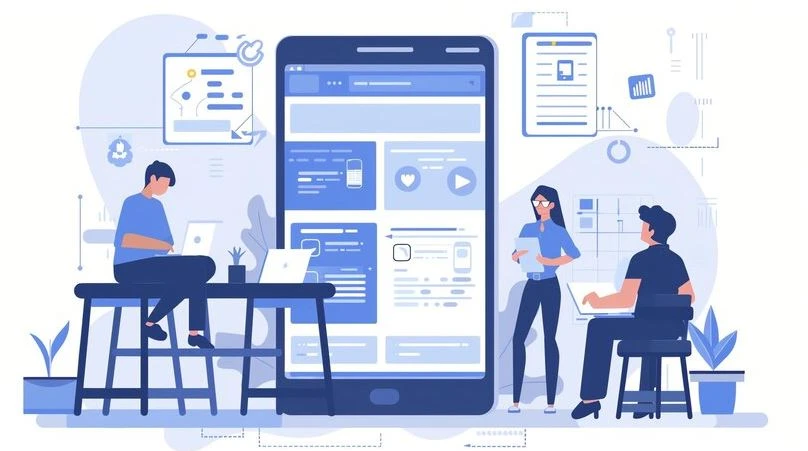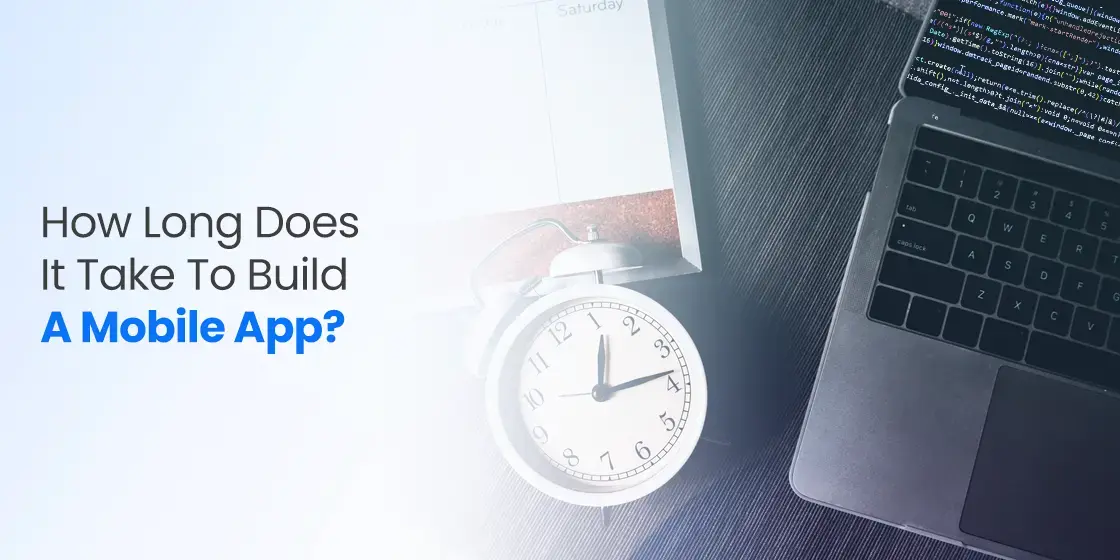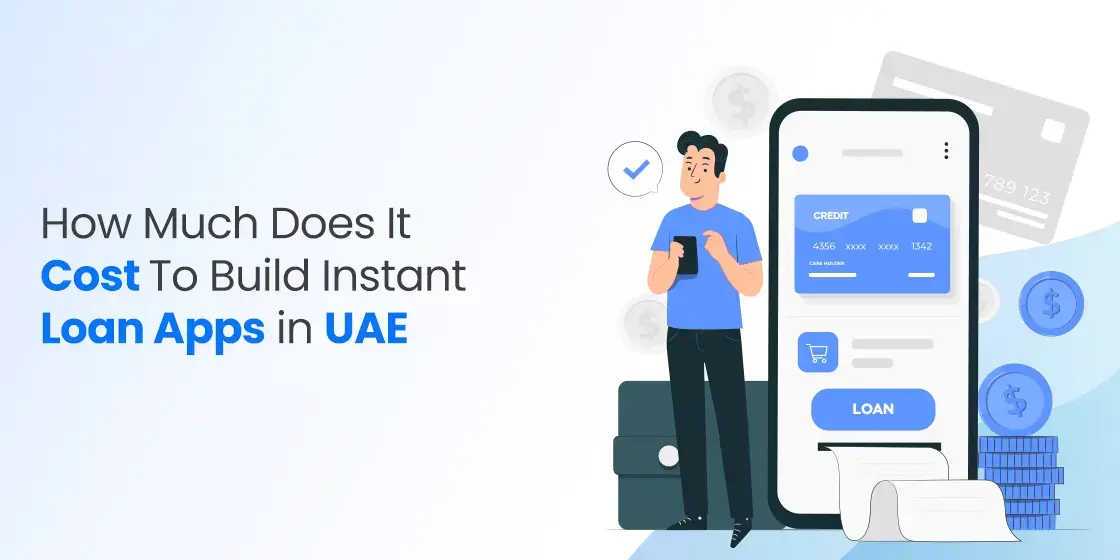Table of Content
Know About the Total Time Duration to Build a Mobile App
Building a mobile app isn’t an easy job. It requires thorough planning and scheduling before starting any development process. A lot of times, beginners do not pay attention to these little things, which is why they face various problems during the development process. It is therefore best advised to first understand the basics of mobile app development. You must know how long does it take build a mobile app by following all the rules defined in the development guidebook. If you will pay attention to these little points, then creating any kind of mobile app won’t remain a problem for you.
Those who do not know much about development, are usually recommended to take professional app development services to build quality mobile apps. It is a wise method to take help from those agencies that are more experienced in the market. They ensure to build apps as per the latest standards, covering all the features and functions that are required in a business application. These agencies also make sure to complete projects quickly, provided there are no intense technical complexities involved in the project.
However, if you are not fond of hiring any third-party, you could always develop mobile apps by yourself. In this regard, you must know how long does it take to build a mobile app, as that timeframe helps you to align various tasks properly. We will explain more about that in detail below, so make sure to read this blog thoroughly to know about the complete ideation and development process.
Why Businesses Need a Mobile App?

In today’s digital landscape, businesses need a mobile app to stay competitive in the market. Mobile apps offer a direct and personalized way to engage with users, allowing businesses to provide a more tailored experience. With the increasing reliance on smartphones for everyday activities, customers expect seamless access to products, services, and information at their fingertips. A well-designed mobile app can enhance customer loyalty by offering features like push notifications, personalized offers, and easy access to customer support, which helps in building a stronger connection with the brand.
Mobile apps also provide businesses with valuable data insights that can be used to understand customer behavior. Through app analytics, companies can track how users interact with their app, identify popular features, and gather feedback for continuous improvement. This data-driven approach allows businesses to make informed decisions, optimize their marketing strategies, and tailor their offerings to meet customer demands more effectively. Additionally, mobile apps enable businesses to implement loyalty programs, all of which contribute to increased sales and customer retention.
Furthermore, having a mobile app enhances a company’s brand presence and visibility in a highly competitive market. Apps allow businesses to differentiate themselves by providing unique features and a more immersive brand experience. Moreover, being listed on app stores can increase a brand’s reach, as these platforms serve as additional channels for discovery. As more consumers prioritize convenience, businesses that invest in mobile apps are better positioned to capture the attention of their target audience, ultimately leading to growth and long-term success.
How Long Does it Take to Build a Mobile App?

The time required to build a mobile app can vary widely depending on the app’s complexity. For a basic app with standard features like simple user interfaces, minimal functionality, and no backend integration, the development time might range from three to six months. This period typically includes planning, designing the user interface, coding, testing, and deploying the app. During this phase, developers focus on creating a functional prototype, refining the design, and ensuring the app meets the basic requirements and provides a good user experience.
For a more complex app with advanced features such as real-time data synchronization, user authentication, payment gateways, or custom animations, the development process can extend to six to nine months or longer. These apps often require integration with third-party services, more intricate coding, and thorough testing across multiple devices and platforms (iOS and Android). Additionally, the complexity of the backend infrastructure, including database management and server-side logic, can add to the development timeline.
In cases where an app is highly complex, involving elements like artificial intelligence or third-party API integrations, the development can take a year or more. Such projects often require multiple development sprints, and continuous collaboration between designers, developers, and stakeholders. Beyond just building the app, there are also considerations for post-launch maintenance, updates, and improvements, which can extend the overall timeline. Therefore, more sophisticated applications demand a longer development period to ensure they meet all functional and performance criteria.
Stages and Timeline of Mobile App Development

There are different stages involved in app development, and each of them requires a significant amount of time. Having an understand of these phases and their timelines helps developers to plan everything smoothly. It gives them a clear idea how much the app development will take when they’ll employ a precise set of resources in the project.
Business Idea Analysis
The business analysis phase typically spans four to five weeks, during which time a comprehensive evaluation is conducted to lay the groundwork for the development of a mobile application. During this crucial stage, stakeholders must grasp the importance of defining the unique characteristics that the mobile app should possess. This involves a deep dive into the specific features, functionalities, and services the app will offer to meet the needs of the target audience. A clear understanding of these aspects is essential to ensure the app is well-aligned with the company’s objectives.
Furthermore, mobile app development companies need to conduct a thorough analysis of the competitive landscape. This involves identifying key competitors and examining their offerings in detail. Understanding how existing apps in the market address similar problems allows the company to pinpoint opportunities for differentiation. By analyzing competitors’ strengths and weaknesses, businesses can craft a strategy that positions their app uniquely. This step is critical as it helps in shaping a product that not only meets market standards but also stands out in a crowded marketplace.
In addition to competitive analysis, it is imperative for companies to focus on solving specific customer problems through their mobile app. This requires an in-depth exploration of customer pain points and preferences. The insights gathered from this research help in designing an app that directly addresses these issues, thereby increasing its relevance and appeal to the target audience. By prioritizing customer needs and ensuring that the app delivers a solution to their problems, companies can enhance user satisfaction and foster long-term engagement with their product.
Project Idea Validation
The validation process typically spans three to six weeks, a crucial period during which a company’s proposed design and plan for a mobile app are thoroughly tested. This phase is essential before committing significant time and financial resources to the development process. By conducting a detailed examination of the app’s concept, businesses can identify potential pitfalls, such as user disinterest or market saturation. For instance, if the app’s features resemble those of existing competitors, it could generate negative feedback or even backlash from the users.
One of the primary reasons for validating a concept is to ascertain whether there is genuine demand for the proposed app. This step is vital in preventing the development of a product that fails to resonate with its intended audience. Market research and user feedback during this stage can reveal critical insights into whether potential users would be willing to pay for or engage with the new app. Without this validation, companies risk investing in a product that might not stand out in a crowded market or, worse, might be met with indifference or resistance.
Ultimately, the goal of the validation process is to ensure that the concept is not just an attractive idea on paper but a viable product with a clear market need. A failure to adequately validate an idea can result in the product becoming just another “cool proposal” that lacks the necessary appeal or differentiation to succeed. By dedicating time to this process, IT companies in Dubai can refine their concepts, address any shortcomings, and better position their app for success in a competitive landscape.
Formulating Design Sprints
The design sprint is a highly effective methodology for tackling complex problems by rapidly creating prototypes and studying user behavior, particularly in the context of mobile and web applications. This approach is invaluable for teams looking to quickly explore ideas, iterate on designs, and gain insights into how users might interact with a new product. By compressing the design and testing phases into a focused period, design sprints allow teams to make significant progress in a fraction of small time that traditional development processes might require.
Typically, design sprints last between three to six weeks, depending on the scope and complexity of the project. Within this timeframe, teams are guided through a structured process that includes understanding and resolving the problem. This accelerated schedule is designed to maintain momentum and ensure that ideas are swiftly transformed into tangible outcomes. The goal is not to create a perfect product in this short period but to quickly validate concepts and identify any major issues before moving forward with full-scale development.
The core of the design sprint methodology is its emphasis on building and testing a prototype within just a few days. This rapid prototyping phase is crucial because it provides immediate feedback from users, which can be used to refine the product concept. By simulating the user experience early on, teams can make informed decisions and avoid costly mistakes later in the process. Ultimately, design sprints empower teams to move from ideation to actionable insights in a matter of weeks, significantly reducing the risk associated with bringing a new app.
Product Development
When developing cross-platform applications, the typical creation timeline ranges from six to twelve weeks. This period is necessary to ensure that the app is optimized to function seamlessly across different platforms. While this may seem like a lengthy process, the investment of time pays off significantly as companies often experience a substantial increase in user engagement and visitor numbers once the app is launched. The increase in visitors can be attributed to the app’s ability to reach a broader audience by being accessible on multiple platforms simultaneously.
It is essential to recognize that the development timeline can vary based on the app’s functional requirements. More sophisticated apps with advanced features and integrations may require additional time to develop, as each element needs to be carefully crafted and tested to ensure smooth operation. The functionality of the app directly impacts the overall development process, necessitating careful planning. Developers must strike a balance between incorporating essential functionalities and adhering to the project timeline to avoid unnecessary delays.
A critical aspect of the development process is timely testing, which plays a vital role in identifying and fixing bugs before the app is launched. Testing must be integrated into the development schedule to catch any issues that could potentially hinder the app’s performance. If testing is delayed or not thoroughly conducted, it can lead to interdependent features malfunctioning. Ensuring that testing is done promptly allows developers to address any problems early on, facilitating a smoother launch and a better user experience overall.
Final App Deployment
The final step in bringing an app to a global audience is its publication in app stores. This crucial phase marks the transition from development to distribution, where the app becomes accessible to users worldwide. The process of publishing an app varies depending on the platform it was designed for, such as Apple’s App Store or Google Play. Each platform has its own set of guidelines, requirements, and procedures that developers must follow to ensure their app meets the necessary standards for approval.
Once the app has been developed and thoroughly tested, the submission process begins. This involves preparing the app for review, which includes creating an app listing, uploading the necessary assets, and ensuring compliance with the platform’s policies. The submission process also requires attention to detail, as any discrepancies or missing information can lead to delays in approval. Developers must carefully navigate the platform-specific requirements to avoid potential rejections or the need for resubmission.
If the app submission is done correctly, the review process typically takes between 7 to 14 days. During this period, the app is reviewed by the platform’s review team, who assess its functionality and adherence to content policies. The timeframe for approval can vary depending on the platform’s workload and the complexity of the app. However, if all criteria are met, the app is approved and published quickly. This final step is critical in ensuring the app’s success in reaching a wide audience and achieving its intended impact.
Frequently Asked Questions
| Why mobile apps have become important for businesses? Mobile apps have become essential for businesses as they offer direct customer engagement,. Additionally, they provide valuable data insights, enabling more targeted marketing and improved customer retention. |
| How long does it take to build a mobile app? Building a mobile app typically takes 3 to 6 months for a basic version, while more complex apps with advanced features can take 6 to 12 months or longer. Timelines depend on the app’s complexity, design requirements, and the development team’s size and experience. |
| What type of tools and technologies are used for mobile app development? Mobile app development commonly uses coding languages like Swift, Java, Kotlin, and cross-platform tools like Flutter and React Native. Development also involves integrated development environments (IDEs) like Xcode and Android Studio, along with backend services, APIs, and version control systems like Git. |
Final Words
That concludes our entire blog in which we have discussed the total time developers require to build a mobile app. This is one of those jobs that depends largely on the complexity of the application. If the project features are more critical, then the timeframe to build an app quickly increases. This blog has discussed other factors as well that often increases the time of development. It is therefore a good read for all those who want to how long does it take to build a mobile app, and what type of measures they should take to make the whole process successful.

Empower your digital journey with StruqtIO - Your dedicated partner for cutting-edge custom software development, innovation, and digital transformative solutions. Harness the power of technology to elevate your business and redefine your digital landscape today.


